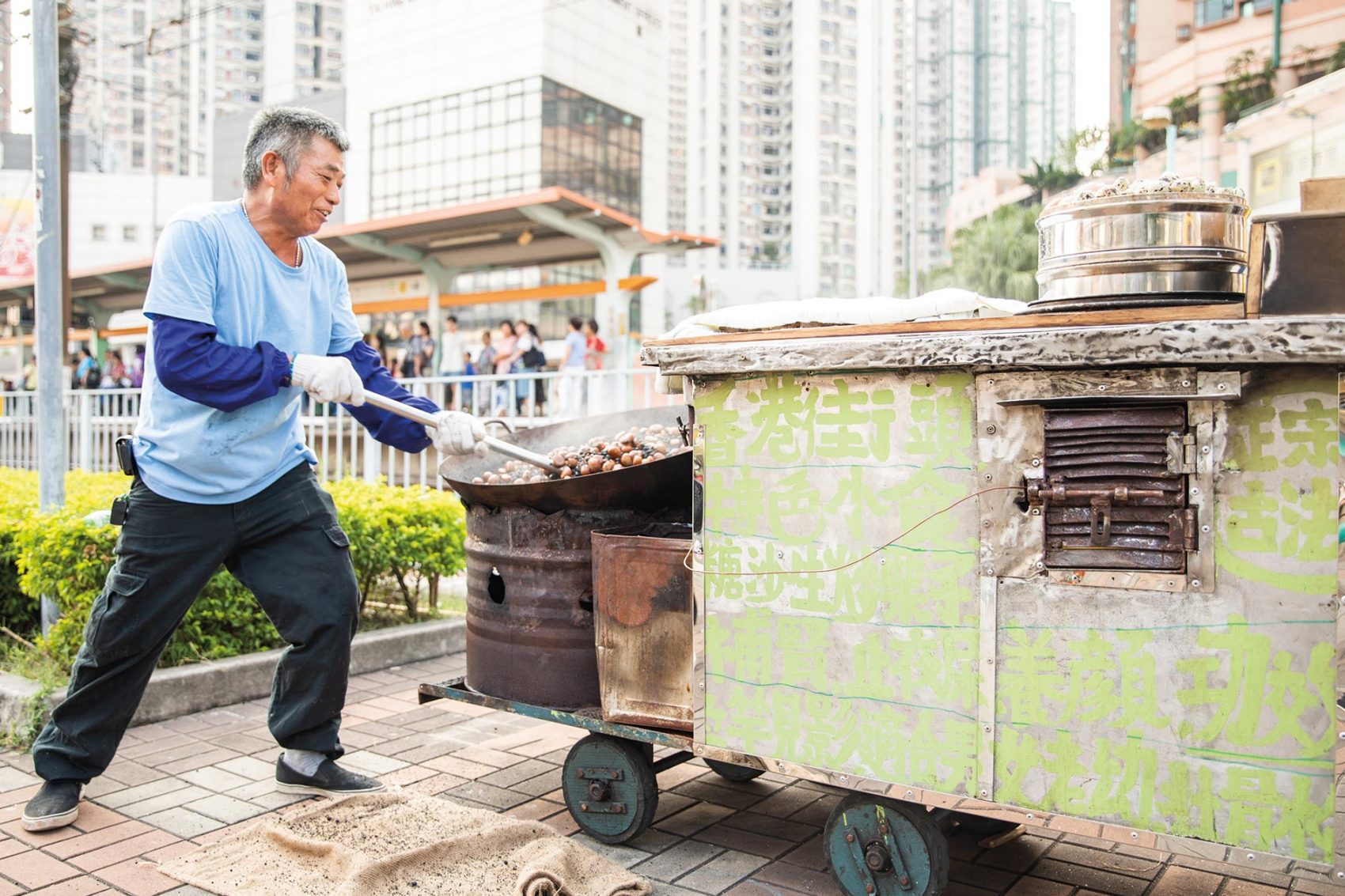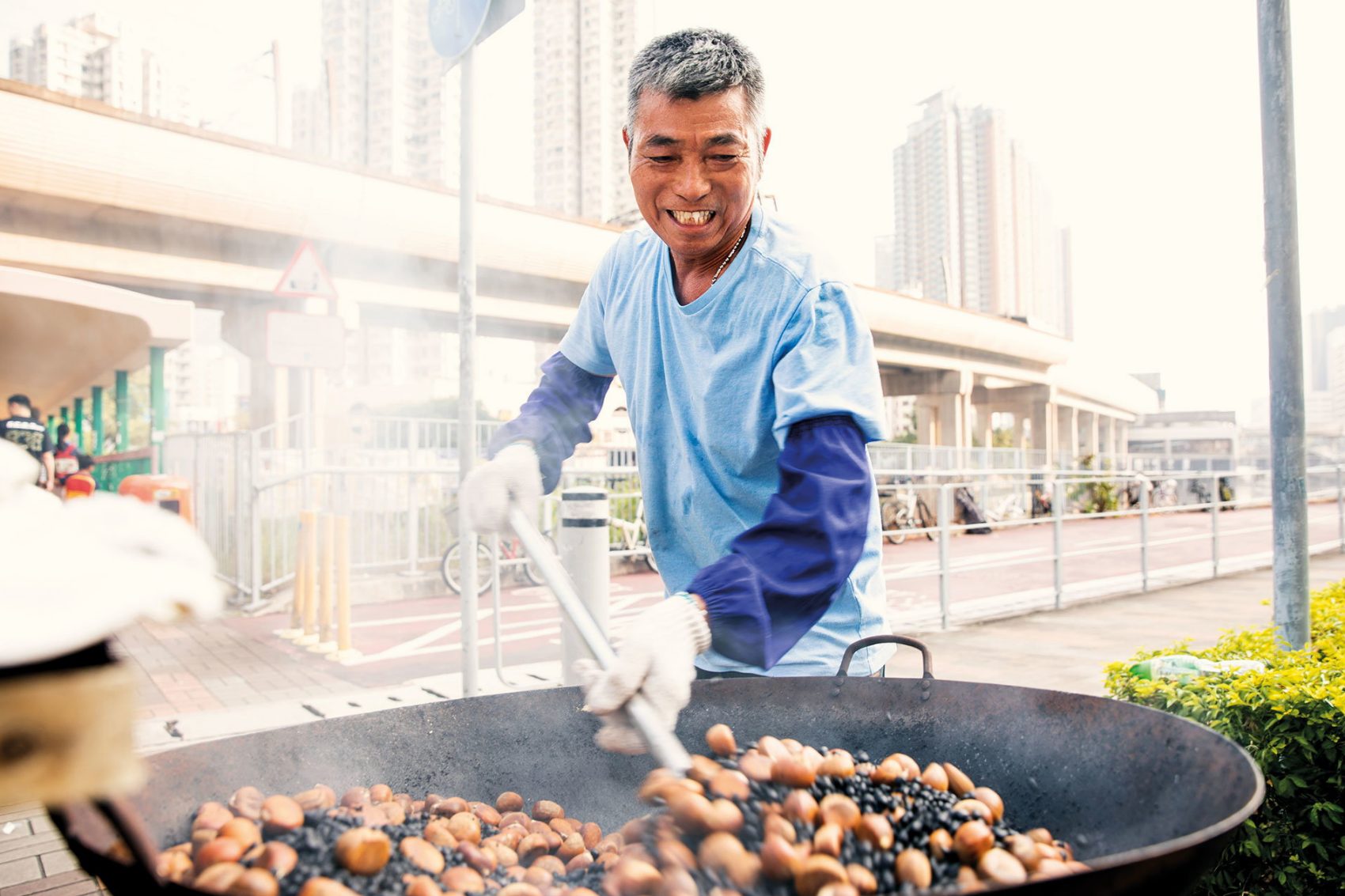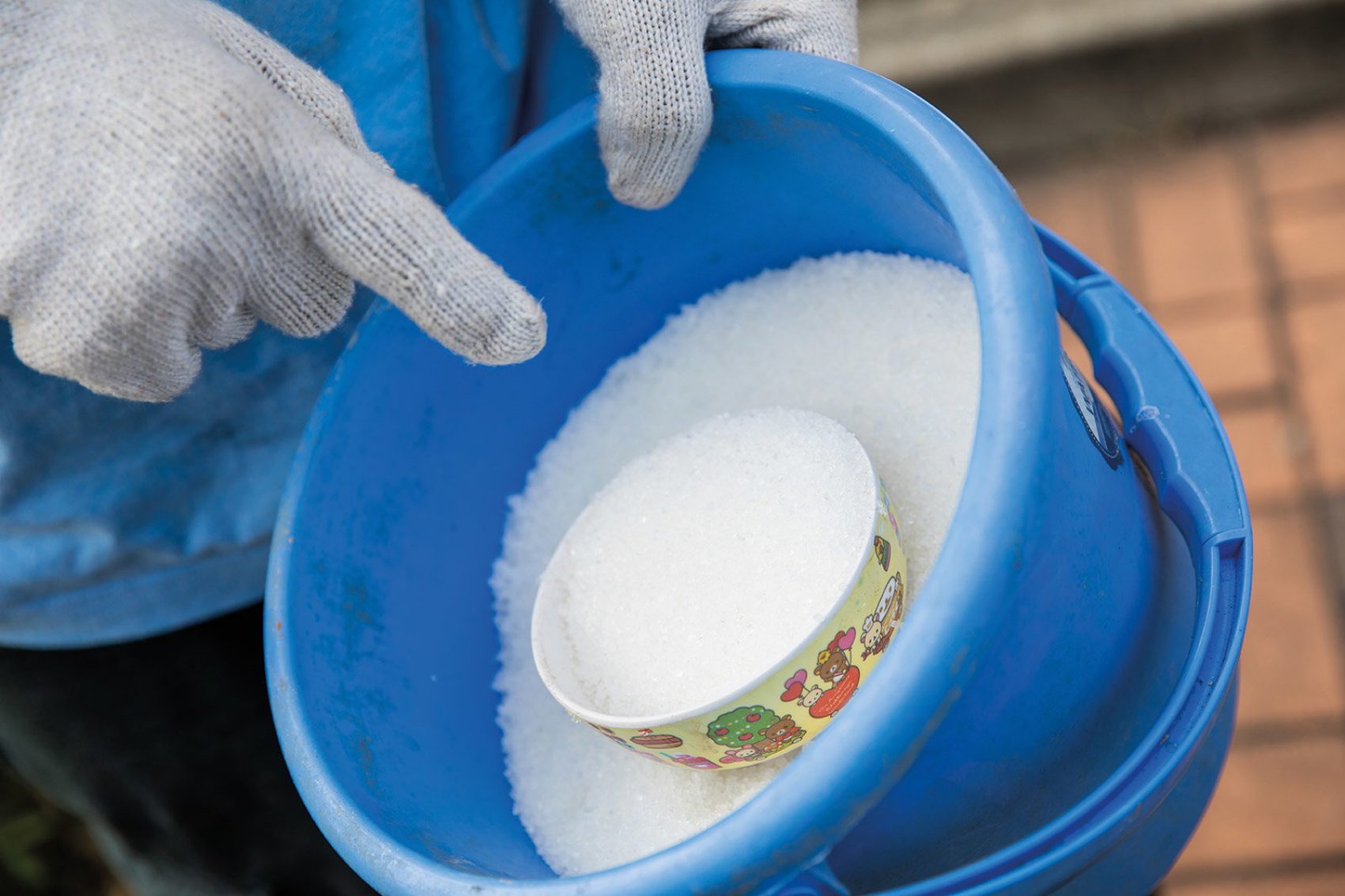Why roast chestnuts get Hongkongers in the festive spirit

The scent of hand-roasted chestnuts hangs in the air, an unmistakable sign that winter is just around the corner. These aromatic treats first start appearing in October as mobile hawker stalls spring up on sidewalks around the city, attracting hungry passers-by with their fragrant goods.
Wong Yau-shun is one such vendor, wielding his giant gas-powered wok outside the Choy Yee Bridge MTR Light Rail station in Tuen Mun. ‘I started apprenticing as a roast chestnut hawker when I was in my teens,’ says the 63-year-old Hongkonger, who went on to start his own business more than 40 years ago.
He runs his stall alongside his wife, with the pair typically stationed in the Tuen Mun, Yuen Long and Tin Shui Wai areas of the New Territories, where he’s been serving a steady stream of regulars for decades. He and his fellow chestnut sellers often plant themselves outside subway stations because of the high volume of foot traffic. But they don’t fight over territory: ‘We all have our established spots.’

Credit: Moses Ng
Roast chestnuts are a beloved winter tradition that ‘evoke a special Hong Kong feeling’, says Wong. But the association with the cooler months is rooted primarily in practical reasons: that’s when they are in season, explains Wong. ‘[The best chestnuts] come from China’s Shandong province. The soil there is good, and the climate suits the growing of chestnuts’, he says.
Working with a supplier based at the Yau Ma Tei fruit market in Hong Kong, he receives 110 catties – 66 kilograms – of chestnuts every day, preparing them at a small warehouse he owns at San Hing Tsuen village in Tuen Mun. The process includes submerging the chestnuts in water to check for quality – the ones that float are discarded.
But it’s back on the street where the magic happens. Wong heats up coarse sugar in his wok ‘so the chestnuts don’t dry out as easily’. Using the sugar also gives the chestnuts a ‘shiny exterior’ and ‘crispy bite’, he explains. Others don’t necessarily do it this way: ‘Not many people know how to cook with coarse sugar,’ Wong confides. ‘Others use sand from the beach to fry their chestnuts, which doesn’t taste as good. It’s tough to the bite.’ The chestnuts are moved continuously in the wok for about 40 minutes until they’re ready to eat: HK$25 for half a catty (300 grams) or HK$48 for a whole catty (600 grams).
When the season is over – around the Ching Ming Festival, which usually lands in April – the roast chestnut hawkers close up shop. In the warmer months, Wong switches to his summer job as a renovation worker.

Credit: Moses Ng
But the popular street food is at risk of disappearing. The Hong Kong government severely restricted the issuance of hawker licenses in the 1970s. At the end of 2018, there were just 383 Itinerant Hawker licenses remaining (as opposed to Fixed-Pitch Hawker licences, which number 5,148). Wong’s family license, which allows him to wheel his wares to the best spot, is actually held by his sister, who is in her 70s. Unlike the fixed-pitch licenses, it cannot be transferred to another person, even in the event of their death.
‘The authorities don’t care too much for the culture of street food’, laments Wong, estimating there are only about 40 to 50 chestnut hawkers left in Hong Kong. Luckily, he’s not thinking about retirement just yet – perhaps because his most passionate customer is himself: ‘Have you ever tasted machine-made chestnuts? They don’t taste as good’, says Wong. ‘When you eat one of mine, it just melts in your mouth.’
Hero image: Moses Ng
More inspiration
Hong Kong travel information
- China – the Chinese Mainland, Hong Kong SAR, Macao SAR and Taiwan Region
- Hong Kong SAR - English
- Chinese Mainland (China) - English
- Taiwan China - English
- 香港特別行政區 - 繁體中文
- 中国內地 - 简体中文
- 中國台灣 - 繁體中文
- Africa
- South Africa - English
- Americas
- Canada - English
- Canada - Français
- United States - English
- Asia
- Bangladesh - English
- Korea - English
- Singapore - English
- Cambodia - English
- 한국 - 한국어
- Sri Lanka - English
- India - English
- Malaysia - English
- Thailand - English
- Indonesia - English
- Maldives - English
- ประเทศไทย - ภาษาไทย
- Indonesia - Bahasa Indonesia
- Myanmar - English
- Vietnam - English
- Japan - English
- Nepal - English
- Việt Nam - tiếng Việt
- 日本 - 日本語
- Philippines - English
- Australasia
- Australia - English
- New Zealand - English





.renditionimage.450.450.jpg)

